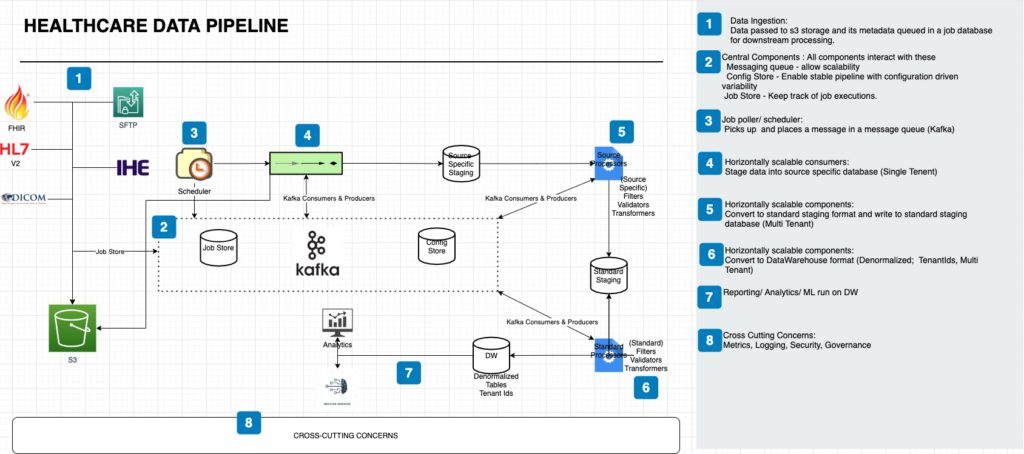Creating stable data pipelines in healthcare can be quite challenging for a number of reasons. In this article we will review at some these challenges and propose an opinionated healthcare integration pipeline that can help mitigate them.
TL ;DR Go straight to the Pipeline
Current State And Possible Solutions
Lack of a standard approach
It is understandable that every healthcare integration project has its own niche and market. This makes it difficult to find a tried and tested methodology for creating a pipeline. However, it is still important to stick to some principles that are applicable to most situations. One such principle is to focus on standardizing the different sources of data so a single (or just a few) pipeline(s) paths can be used
Duplication/ difficult reuse
Without proper planning , data pipelines can degenerate into a mess of customizations that are difficult to reuse.
A good principle to use to prevent such a situation is to apply changes at a few defined levels consistently. For example if calculating some patient risk scores, 1st apply a general scoring logic (reusable across all sources) that is not source specific, then if needed, apply a source specific scoring that can override the general one. These levels should be maintained separately so they can evolve independently.
Reuse can also be enhanced by using configurations ideally stored in a database. The pipeline stages can query the configuration to find out which components of logic to apply to the data. This can reduce the additional pipeline changes needed with every new data source added in the future – The pipeline stays constant as configuration evolves.
Scalability Issues
A solution to scalability problems is to use an event Driven approach. Each step picks up its task from a messaging queue and also sends its results to a queue. Apache Kafka is a good option for this type of setup.
Message queues are better suited for streaming data sources (say hl7 v2 or Fhir), but they can also be used for batch loads if only the job metadata and not the message itself are put in the queue.
Using configuration driven approach mentioned above can also help avoid a ‘pipeline per data source’ anti-pattern.
Moving the Datawarehouse to cloud distributed solutions such as Redshift should also help scale.
To public cloud or not?
The concerns about using public cloud providers in healthcare are getting less with time. Healthcare data being very sensitive (see HIPAA).
Regardless , architecting pipelines based on micro-services that can be deployed in-house, in private or public cloud without a lot of changes should help with this.
Monitoring & Alerting
Pipeline Metrics and Logging are crucial when especially when using horizontally scalable solutions. It is important to be able to view say the counts of data being processed at each stage and processing node and any logs of errors from a centralized dashboard. If this is not done , it is difficult to get notified when something goes wrong.
Skills Shortage
It is difficult to find enough expertise on all the technologies needed to run a modern data pipeline. To reduce the need for specialized knowledge, use of sql based tools (see dbt) can help.
Example Healthcare Integration Pipeline Design
